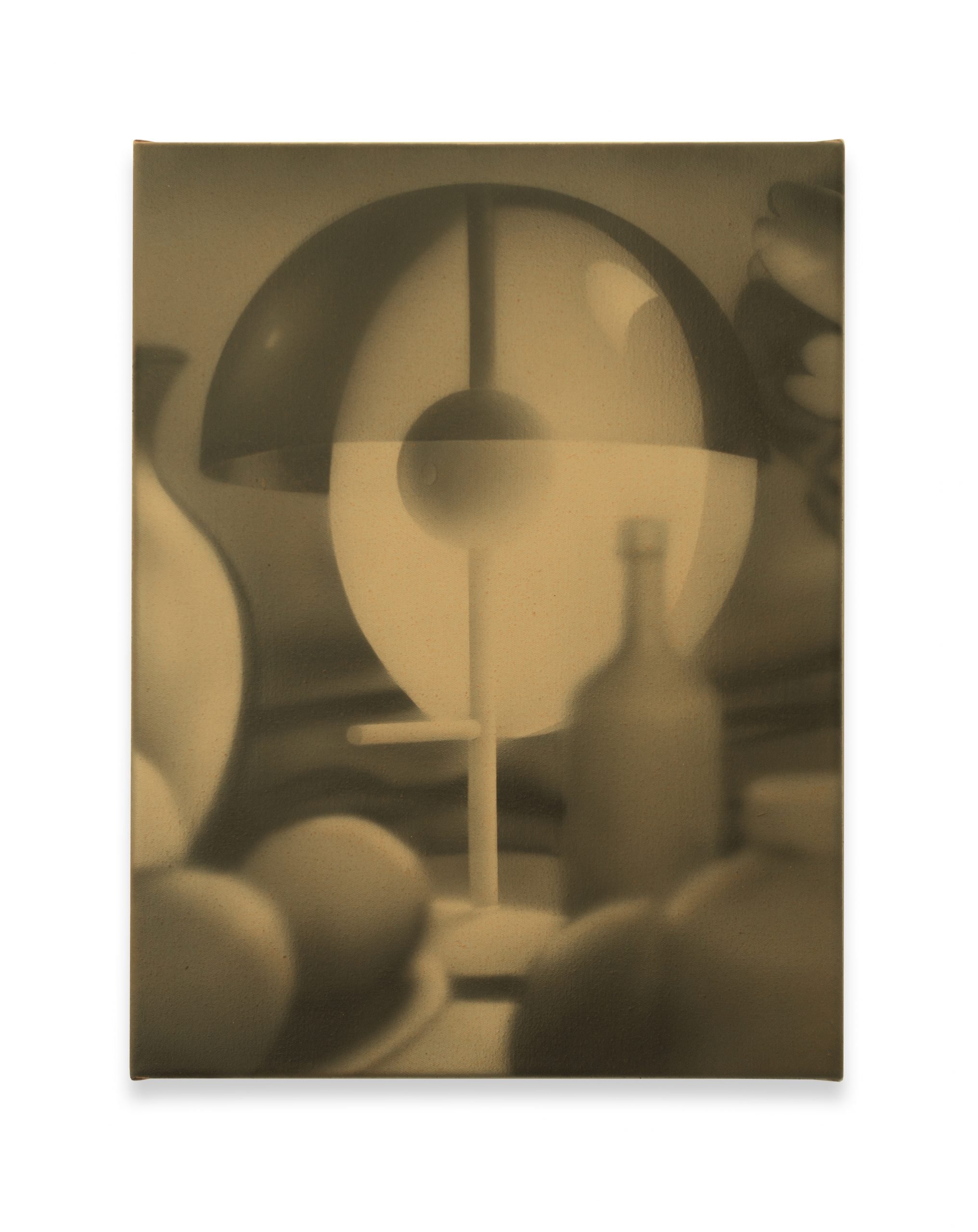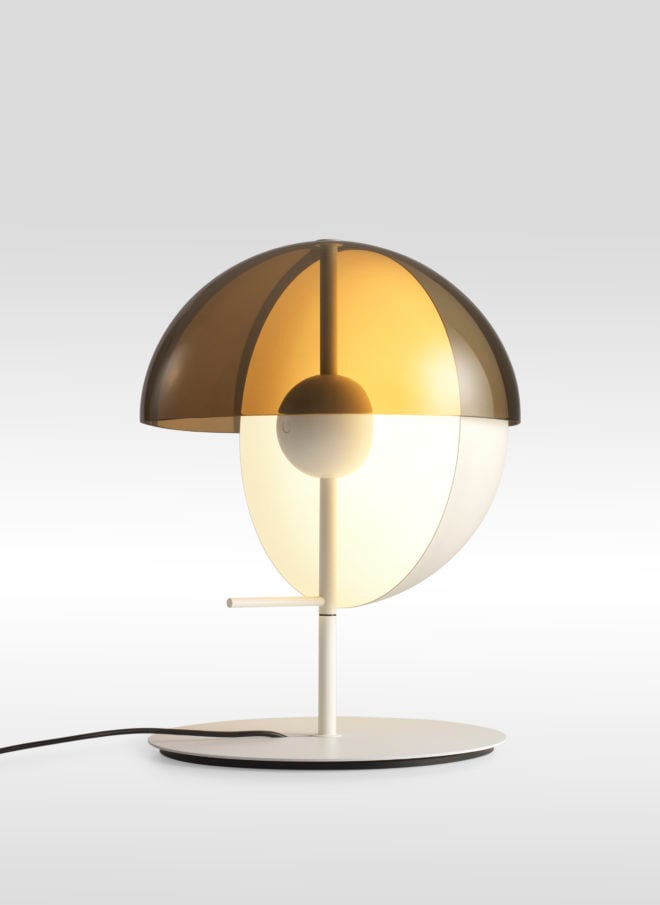Marset Featuring
Paul Riedmueller
Theia
Creating with thoughtful design
Paul Riedmueller is an artist who, through oil paint, airbrush, and vibrant colours, among other delicate techniques, makes two-dimensional surfaces become powerful three-dimensional pieces of work. His artwork comes to life with the use of light, textures and volume.
Play
Pause
Before we dive into your creative process, could you enlighten us on how you entered the world of art? Did you choose it or did it choose you?
PRMy journey into the art world began in my early childhood as I found myself constantly drawing and building things with my hands. I attended an art school to study graphic design, but then got hooked on painting during a school trip to an art university. I remember the smell of oil paint there—it really stuck with me. That's when I decided to focus on painting.
You explore different techniques when creating your art. What makes you choose a particular technique for a project? Do you have a favourite one?
PRI love trying out different ways to create art. Using tools like Photoshop and Blender is great for playing around with compositions and colours. But I also think it’s important to bring those ideas into the real world. Oil paints give me rich colours and let me work more relaxedly, while airbrushing is quick and creates smooth gradients. Each method has its benefits. Right now, I’m really into airbrushing, even though it’s not the most comfortable—it can be a hassle to always wear a mask and handle the awkward gun.
Can you walk us through the process of creating your representation of the Theia lamp?
PRI started by creating a 3D model of the Theia lamp in Blender to explore different setups. Once I achieved the look I wanted, I transferred it onto a grey canvas. I began airbrushing with light grey, progressively added darker greys, and finished with bright highlights. During this process, I used handmade paper stencils to achieve precise, sharp edges, helping me control the paint spray and ensuring that lines were clean and exact where needed. Finally, I applied a thin layer of oil paint to enhance the colours and effects.
Do you believe creativity can be developed deliberately or are we just born creative?
PRI definitely think creativity is a skill you can improve. Sure, some people might be born with a bit of a head start, but what really matters is being open to trying new things. As we get older, it can be tough to step out of our usual ways of thinking, but keeping a playful and curious mindset is crucial if we want to keep growing creatively.
There's a growing trend of people turning to software and artificial intelligence to bring their ideas to life but you flip the process, creating realistic representations from 3D models using analogue methods. How do you decide what you're going to paint?
PRArtists have always used tools to push boundaries and explore new ideas. I embrace modern technologies like 3D programs and AI to shape my concepts. However, I always ensure that my personal touch shines through by dedicating quality time to traditional methods and materials. My choice of subjects varies greatly—I draw inspiration from found footage, digital tools, and real-life scenes. My aim is to bridge these worlds by considering every aspect of image creation and encouraging the viewer to look closely.

Shadows play an important role in your work. How do you explore and play with them, both in your paintings and in your surroundings in real life?
PRShadows do more than just add visual effects; they create a sense of depth and perspective. In my paintings, I use shadows to make the scenes look three-dimensional, even though they're on a flat canvas. By adjusting the lighting and adding different textures, I can enhance the feeling of space in my artwork, making it come to life.
In your opinion, what's "good lighting"?
PRFor me, good lighting depends on the situation and how it makes you feel. When I'm working on a painting or in the wood workshop, I need bright, clear light to see all the details clearly. However, for more relaxed settings like making music or having dinner at home, I prefer softer, dimmed lighting from multiple sources to create a cosy and inviting atmosphere.
Shapes and textures are distinctive features in your art. Which visual aspects of the Theia lamp caught your eye? Where will you put it?
PRThe design of the Theia lamp really caught my eye. Its adjustable feature lets you create different lighting effects, which I find intriguing. It has a retro feel but also looks futuristic. I'm planning to place it in my living room to achieve a warm, diffused lighting throughout the space.
Marset takes great care with a variety of aspects when creating its designs, such as form, function and sustainability. What value does a well-designed object add to a setting?
PRThe question reminds me of a book I read years ago by Don Norman, 'The Design of Everyday Things'. I really enjoyed reading about his examples of bad design—it was quite eye-opening! A well-designed object not only improves a space by being easy to use and aesthetically pleasing, but also by being practical and sustainable. Thoughtful design simplifies our daily lives and enhances our enjoyment of the spaces we inhabit.
And, finally, if you could have a conversation with any artist, living or dead, who would it be and why?
PRI'd really like to chat with David Hockney. I’m inspired by his book on 'Secret Knowledge' about painting techniques—it opened my eyes to new ways of seeing art. Talking with him would give me incredible insights into blending traditional art methods with new tools, and I’d love to learn more about his approach to creating images.


